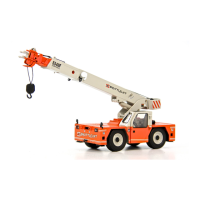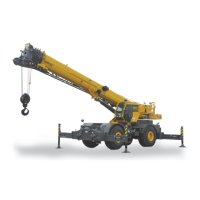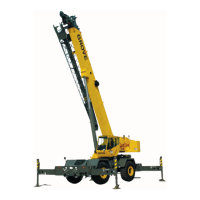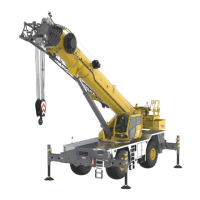4-17
TMS9000-2 OPERATOR MANUAL OPERATING PROCEDURES
Published 02-21-2019, Control # 611-05
Traveling - General
Do not move the crane until the superstructure has been
secured as outlined below.
• Ensure the axles and/or suspension are not overloaded.
Refer to Axle Weight Distribution Table, page 4-23.
• Ensure all boom sections are fully retracted or set to
whatever extension is necessary for a balanced load on
the axles.
• Ensure the boom is fully lowered into the boom rest.
• If equipped, engage the optional 360° swing lock, except
for trailing boom mode.
• Ensure the swingaway, if so equipped, is properly
stowed and secured.
• Remove the hook block or headache ball from the hoist
cable(s) and stow securely before traveling or ensure
headache ball is properly secured to the tie down
provided for that purpose.
• Ensure the outrigger jacks and outrigger beams are fully
retracted and the floats are removed. Install outrigger
beams locking stirrups for retracted position.
• Ensure the jack floats are properly stowed in their
holding racks.
• Ensure the center front jack is fully retracted.
• Ensure the cover doors on the outrigger control panels,
battery box, and sling box are closed.
• Close and/or install all superstructure cab windows and
door.
Jobsite Travel Configurations
When traveling on jobsites with moderate slope the crane
shall be configured as shown in Table 1.
NOTE: The axle loadings are not evenly distributed for all
configurations. These unbalanced axle load
configurations should only be used occasionally
and are not intended for extended travel distances.
• Crane Operator must ensure proper tire inflation and
condition.
• For all the conditions, it is mandatory that the user verify
that the slewing system is set for crane operation and
not for trailing boom or boom dolly operation.
• Swing park brakes must be engaged and the swing
brake hydraulic bypass valve must be closed.
• If the crane is equipped with an optional 360 swing lock it
is recommended that this be engaged.
• Main Boom shall be fully retracted.
• When traveling with the boom over the front it is
recommended to keep the boom in the boom rest.
• When required, the 3-sheave hook block or headache
ball should be hanging 3 ft. below the sheaves and
secured to prevent swinging. No loads shall be lifted.
• When traveling with the boom over the rear it is
recommended that the boom elevation angle shall be
between 0 degree and 10 degrees maximum.
• The travel surface should be firm with no holes or bumps
exceeding a 4-inch variation over 3 ft. of travel (100 mm
over 1 m).
• Maximum travel speed is restricted to 2.5 MPH (4 km/h).
• Take care that turning maneuvers are performed using
the largest turning circle possible. Do not make any
sudden movements.
• Travel with 26.2 ft. (8 m) lattice insert erected is not
permitted.
CAUTION
Check cold tire pressure daily. Refer to tire inflation decal
on crane.
Job site travel with deflated suspension must be limited to
8 km/h (5 mph). Attempting to travel at higher speeds
may cause drive train component failure.
Table 1
Driving Rigged Crane with Boom at 0° Angle – 3-Sheave Hook Block Reeved Stowed Boom Extension or with
Boom Extension Removed
Counterweight
(LBS.)
Superstructure
Position
Main Boom
Angle (°)
Maximum Side
Slope (%)
Maximum Side
Slope (°)
Front Axle
Loads
(LBS.)
Rear Axle
Loads
(LBS.)
< 16,000 Over Front 0 10.0 5.8 See Weight Sheets
16,000 Over Front 0 10.0 5.8
20,050
31,300
18,000* Over Front 0 10.0 5.8
19,600
32,700

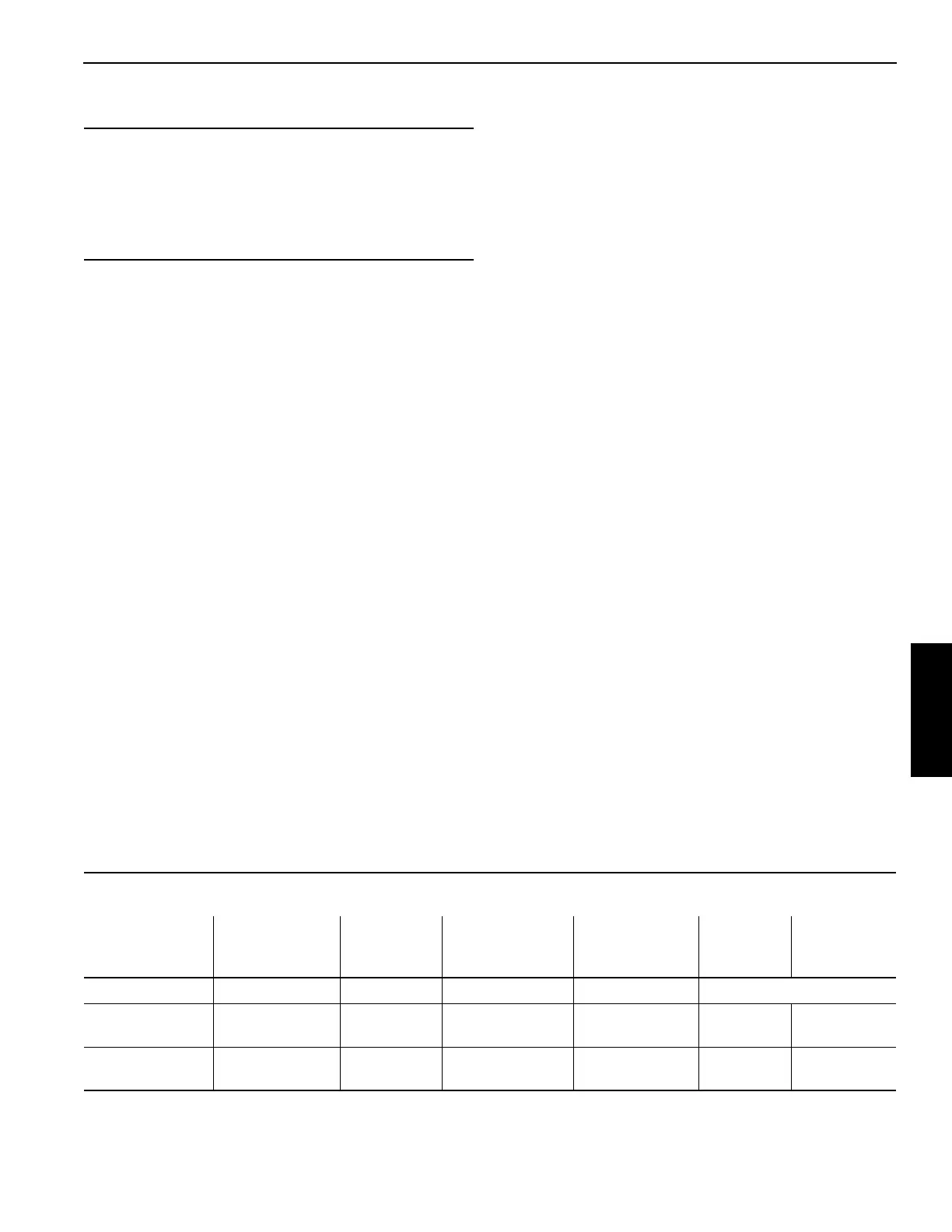